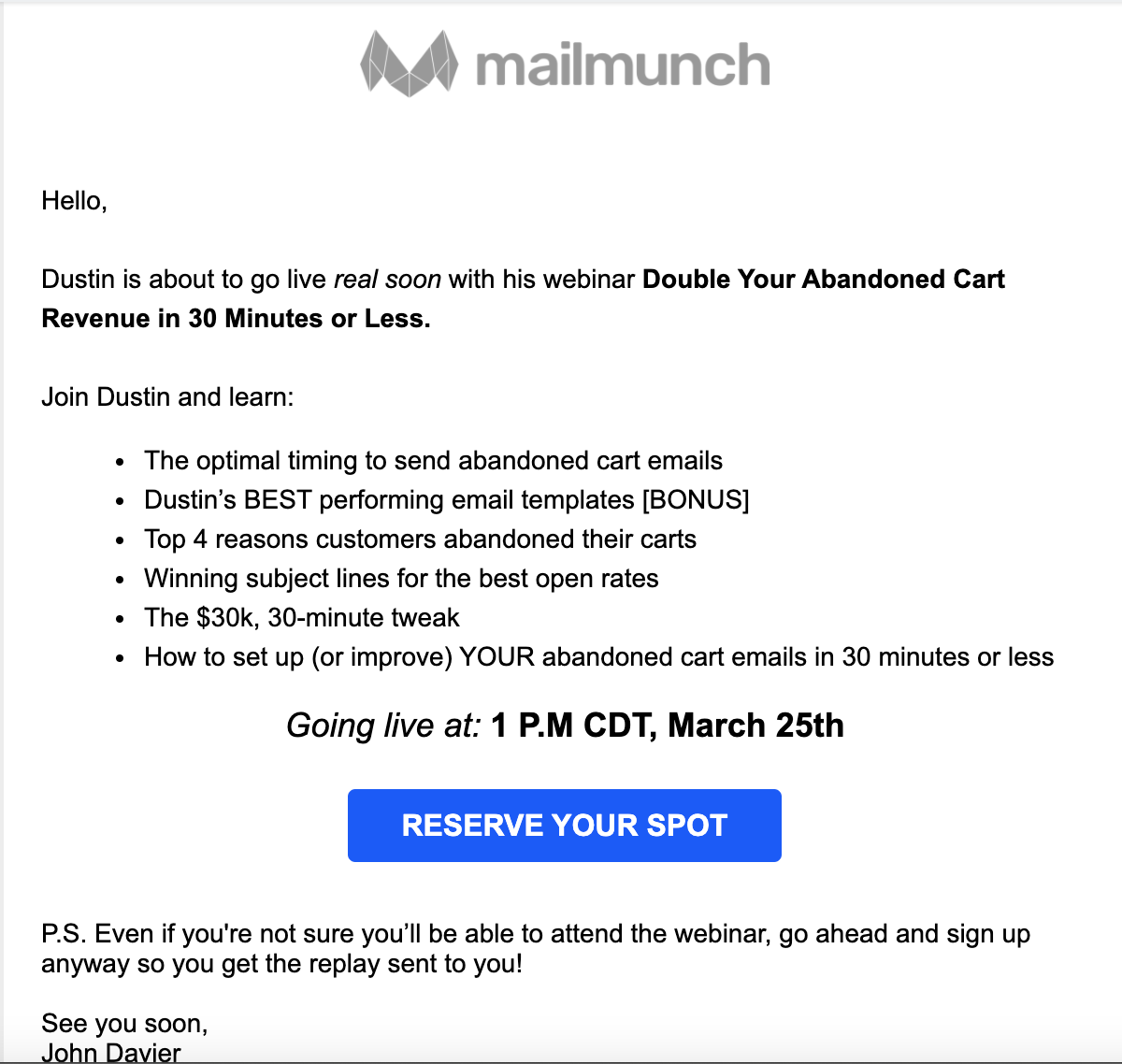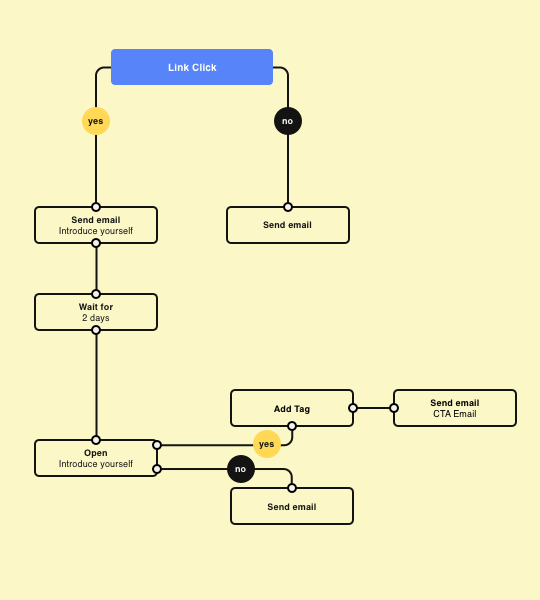

Last updated on
March 17, 2024
Every email marketer has one goal: growing email lists and converting subscribers to customers. This goal is the reason you need to work on building a sales funnel that brings the best results. This blog will help you craft the perfect email marketing sales funnel by going through each and every step of an email marketing funnel.
There are many ways to move the subscriber from one step to the next including the social networks, researching the subscriber, and creating campaigns. Email marketing is still very influential for B2B or B2C conversions. 73% of marketers call email marketing their go-to strategy for conversions. This trend among digital marketers is projected to hit 319.6 billion emails daily by 2021.
With this increasing number, you have to come up with a strategic plan to stay relevant and an email marketing sales funnel is the solution. Is it confusing? Don’t worry! We are here to untangle all the complexities. Let’s start with the marketing funnels.
A marketing funnel includes the steps any visitor takes towards becoming a customer. A complete system designed to make this conversion happen is the marketing funnel.
When you go online, there are a few steps you take before you buy something. The process goes like this:
Sometimes, a visitor can take more steps before making a purchase. For example, a visitor may take a look at your About page, Careers page, and other pages before making a decision. Your marketing funnel keeps track of the whole journey of the visitor and using this, you can measure how close a visitor is to making a purchase and becoming a customer.
Before building an email marketing funnel, let’s get into what an email marketing funnel is. It is a representation of the customer journey from prospect to buyer and then to an advocate.
But why is an email marketing funnel required?
Oberlo published some stats that explain the importance of emails in our lives. According to this,
There’s no reason to avoid this aspect of marketing. These numbers may vary from industry to industry but that doesn’t affect the importance of building an email marketing sales funnel.
To build an email sales funnel, you have to keep track of your email performance. If you’re getting the numbers on your performance, it’s only then that you can carve out an optimized strategy.
The better your email marketing funnel is, the better revenue you’ll get. With that being said, you don’t have to use email marketing for sending out bulk deals. The sky’s not the limit here.
You need to have a scale to measure anything. A marketing funnel is your scale to learn where a prospect stands and how likely he is to buy something. There are different stages of the funnel.
A marketing funnel used to consist of these four steps in the past
But with more research and upon more attention, we can see better where the prospect stands.
Let’s walk through each step of the funnel.

Image Source: Campaign Monitor
A pretty simple rule here. How are they going to buy from you if they don’t know about you? You have to introduce yourself to the prospects and to do that, you can use any of these mediums:
People become aware of your business at this point and might start exploring what you have to offer.
This is the best time you should send emails that explain how your product can solve their problem. Show them the features and benefits of your product and portray it as the solution.
You can capture leads by offering free value through these methods. Send your visitors a:
It not only allows your prospects to feel how it’s like to do business with you but also helps you establish a positive customer relationship.
This marketing step comes after every step of the funnel. It is placed after the awareness step to emphasize its importance. Engagement helps find out the pain points of the prospect and gives you an idea of how you can solve them.
Engagement helps you build a valuable relationship with the prospect through a value-building action. It can be done through email nurturing or opt-in forms that let you get the essential information.
When a prospect is showing interest and you’ve collected their information, they’ve entered the consideration stage. They want to learn about your business and everything that you have to offer.
This is the time you have to make more effort. You have to consider the prospect as well. Learn everything about them and build a strategy to attract that prospect.
Once you have a strategy in place, build personalized content. Add whatever it was that attracted the prospect to you in the first place, understand their goals, background, and interests, and send out emails. Recommend useful solutions to their pain points that you found out in the engagement stage.
Don’t forget about timely follow-ups with your customers and prospects as they nurture your leads and engagement.. You have to apply various touchpoints to move your prospect to the next stage.
This step is very important in the email marketing funnel. Before you go craft an email marketing sales funnel, you should focus on getting to know this stage.
This helps the prospect to make a decision. Personalization is what makes it easier. 82% of the marketers say that email personalization got them increased open rates and 75% noticed an increase in click-through rates.
This is almost the midpoint of your marketing funnel and you have to work with your lead to help them figure out what they need. Before you build a sales funnel, this step is important to nurture the leads.
After nurturing your prospect through the previous stages, and through successful interactions, your lead is now sales qualified. You can put out your offer now. Just ask your prospect to give your product a try. Be direct. Tell them your product has crazy offers, great features, and testimonials that show how your product can help him.
Once you have told your prospect all about the product, don’t hesitate to add a call to action. They can now buy it, try it, download it, purchase it, get registered, and can choose from any other options you have for them.
At this point, your prospect is ready to buy your product or a similar product from your competitor. They have done their research and know that this is the solution. All you have to do is tell them how you are better than the competitor. Your email sales funnel should send out an email that is personalized and asking the prospect to take action. You can easily convert a prospect to a customer at this step. We will discuss this further in the email marketing sales funnel section.
Once you take the prospect to this step, the email marketing funnel doesn’t end here. You have to make your customer adopt your product completely. Set them up for a lasting relationship with your brand.
Send out emails that give them access to your brand. The customer should have all the resources and necessary onboarding tools. What to send and how to send should be decided in the email marketing sales funnel.
You have converted the prospect to a customer and the customer has now adopted your brand. Your email marketing funnel has to move them to the next stage that makes them stick around. The customer shows loyalty if they keep on getting value.
When building an email marketing sales funnel, you have to consider the fact that the more loyal your customer is, the better ROI you’ll get. To make the experience better for your customer, send out emails that are more personalized and add value.
Be approachable. Open the conversation with your customer and this will be your chance to expand. When you get feedback from the customer and find out where the solution is for them, only then you’ll be able to take things to the next level.
Building a sales funnel that keeps the customers’ and your options of expanding open is the right path. Move your customer toward trying new things from you.
Your customer is the best marketer you can get for your brand. Once the customer starts advocating for you, you will see your brand booming.
However, a customer might not start doing it by themself. You might have to give them a little push. Ask for recommendations, reviews, and other feedback.
Make the referrals rewarding for them. Your customers have to become fans of your brand for this to happen. To ensure word of mouth, build a sales funnel that checks all the boxes.
An email marketing funnel takes the prospect through this journey. However, sometimes marketers find it hard to place their customers in one of these boxes. The customer can find their place in more than one box at one instant.
An email marketing sales funnel consists of a series of emails designed to achieve a specific position in the customer’s journey. To explain it better, we can say, it is the set of emails a marketer sends out to move a customer forward in a customer journey.
A customer needs a little push to move in the eight marketing funnel stages mentioned above. You can educate a customer more, help him in making a decision, or even stay with him through emails to build a strong relationship.
Email marketing tools like Mailmunch help a lot in conversational or conversion emails that are part of your sales funnel.
There are three steps to carry out while converting a prospect into a customer.

Stages of Email Marketing Sales Funnel
When you start sending emails to the prospect, the first step is to add value.
This is to introduce your brand to the prospect and position yourself as a trustable resource.
A value-adding email can contain anything like a pdf file, a whitepaper, an educational resource, giveaways, and much more.
Selling from the first email can lose you a lot of leads. Take baby steps and start with adding value as this will earn the lead’s trust.
Remember, the first emails always have to be something light.
You have added value for the prospect but now it’s time to take it a little further. Your next step is to place yourself as a thought leader.
Make an impression as the only solution to their problem. You can nurture your prospect further but make sure you are building an impression of your brand.
Adding misleading emails at this point can lose you customers. You have still not convinced your prospect to buy from you. Just impress them with targeted emails.
Divide the prospects into lists depending upon their interests and personalities and send out personalized emails. This will take them closer to making a purchase.

Nurturing email to prospects from Mailmunch
Take a look at this email from Mailmunch where they are simply nurturing their leads by introducing them to a solution but still not pitching a sale. Instead, the email provides more value and is inclusive.
Now that you have presented yourself as a thought leader and an authority, you have made an impression in the minds of your prospects. This is the point where you ask them to go for your product.
Give a direct offer to your prospects and ask them to buy your product. Give them discounts, or introduce the features and benefits and then add a call-to-action (CTA). Remember, you do not necessarily have to be all sales-y to make a sale, but at this point being sales-y doesn’t hurt either. Just choose your style and go for it.
You can also add some testimonials, some FAQs, details of the product, and anything else that might help prospect in making a decision.
Building an email sales funnel is not an easy task. But there are many email automation software in the market that help in making this task less hectic.
These are the steps you need to take to build an email sequence for your prospects:
Get more information about your prospects. The more you know about them, the more effective your sales funnel becomes. The concept of quality leads tells us we don’t have to market to everyone. We only market to those who are a good fit for what we sell.
Take a detailed look at your prospect’s behavior and answer these questions
This data will help you refine your buyer personas. Behavioral targeting is more personal and brings out better results.
Consider two prospects:
One signs up after reading your homepage and the other signs up when you started a social media campaign. Will you send out the same email to both these prospects?
There are some traditional methods to do this but some calculated ones can be formed by analyzing the data. To segment the list on the basis of behaviors, you first have to choose what behaviors should decide your email content. Once you understand who your user is, you can build segments more easily.
Now you have to get the attention of your audience. Once you have segmented the list, target your prospects with carefully curated emails. Your sales funnel will only work if you put yourself out there.
You can take the organic route and send out tons of content by diversifying with infographics, customer onboarding videos, and other types of content.
Your emails should be crafted to add value for your prospect and to impress.
Your email has to take your prospects somewhere. It has to be some page that introduces you as an industry leader.
Mailmunch allows you to build a landing page yourself that also works as a lead collecting tool. At this point, your prospects are still low in the sales funnel. Using the landing page builder, you are focusing on capturing leads instead of pushing the sale.
However, you can steer the visitor to the next step using the landing page builder. Add a bold CTA that asks your prospects to take the action that you want them to take. This might not be the way to make a sale but a way to build your authority. You’re just engaging with the user more and more in the email sales funnel.
An email drip campaign is a series of automated emails that are sent to achieve a certain goal. It can be based on triggers, or can be a scheduled campaign.
This is a way of marketing to your leads and the Mailmunch flowchart below shows how it works.

Mailmunch drip campaign flowchart
This is how a drip campaign works. It is visible that the next email in the sequence is sent when it is not opened by the prospect. Another course of action occurs when the prospect does not click on the link.
It is a different story when the prospect opens the email and clicks on the link. You can always use Mailmunch email marketing tools to start drip campaigns in your email sales funnel.
To know what your prospects want to learn, ask these questions first:
Once you have an answer to these, build a drip campaign. Remember, you can’t ask the prospect to buy at the start of a drip campaign. Nurture first, sell later.
Sometimes, a prospect is on the verge of turning into a customer, but he abandons the product right before clicking the payment button. You can not just leave it there thinking this is the end of the campaign. Add an extra step to your email sales funnel. Make sure the prospect buys it by reminding him what he’s missing out on. Properly tracking your sales funnel can help improve conversions and make revenue more predictable by feeding your forecasting tools with more accurate data.
Your prospects turn into customers if you follow the right path. However, this is not where it ends. You still can not forget about the customer if you want to move forward in the email marketing funnel. Thanking them for the purchases, offering coupons, and getting their attention through social media are some ways to keep them in the loop.
When building an email sales funnel, all you need is some patience and determination. It doesn’t have to be complex. With the right strategy, you’ll be building relations and making customers in no time. Just remember:
The email marketing funnel lets you monitor the customer journey and the email marketing sales funnel lets you take steps that you can use to achieve a certain desired action in the funnel.
Now you know how and what actions to take? Start sending and keep converting.
Eman-e-Zahra is an IT graduate and has helped many businesses especially software development companies with their content marketing. Eman has managed to achieve a global clientele with her work by lending them a hand in the marketing strategy department.
Tags:

M. Usama
May 2, 2024

M. Usama
May 2, 2024

M. Usama
April 19, 2024